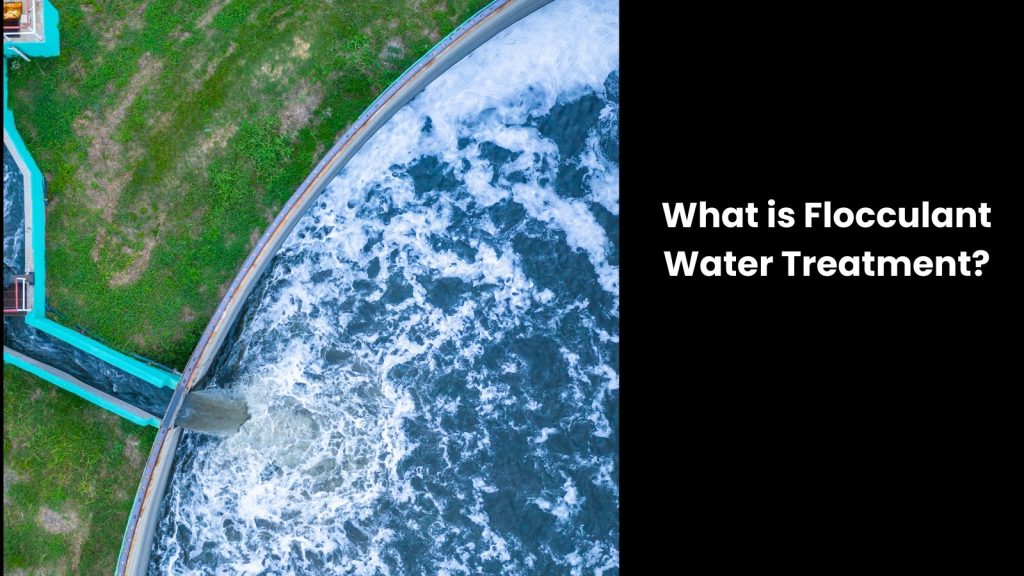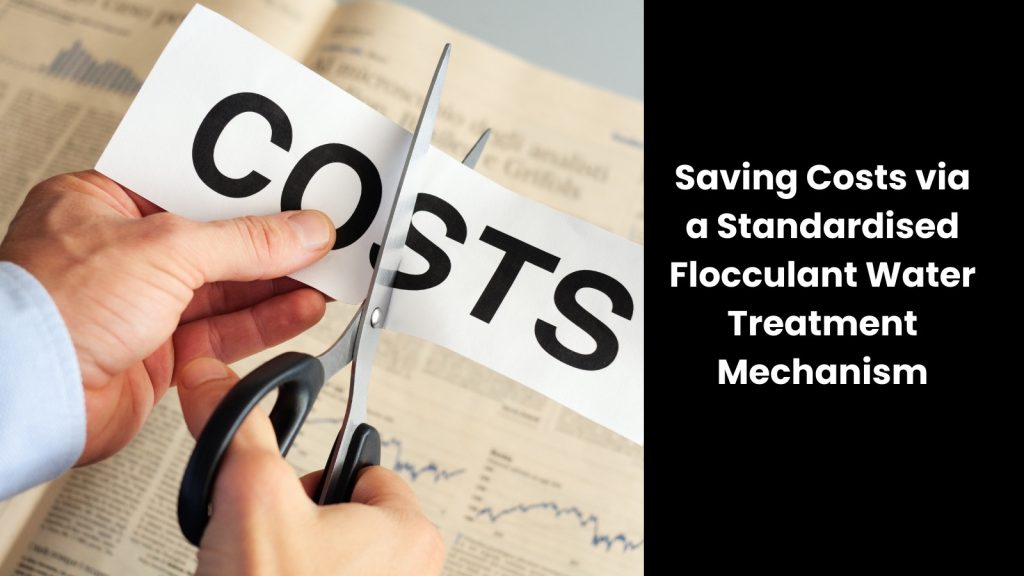Although it is a little tough to predict rainfall in Australia, its water industry and its functioning are just unstoppable. Their main objective is to fulfil the water needs of the population while providing an uninterrupted water supply without compromising the water quality. However, supplying clean and usable water for homes and industries can be a bit challenging. While it needs lots of technological procedures to clean water, these do not come inexpensively. But this is where ‘Flocculant Water Treatment’ enters as the best solution for Australia.
In this blog, we will unveil how this powerful flocculant process is transforming water treatment in Australia.
What is Flocculant Water Treatment?

- Even though there are many other water treatment methods are there in the water industry, this particular strategy or method receives so much attention. Let us explain the reason behind that.
- Flocculant water treatment is a process where chemicals called flocculants are added to water to help remove particles and impurities. These flocculants cause tiny particles in the water to stick together and form larger clumps, or flocs, which are easier to filter out.
- Yes, this treatment is different from other methods, like filtration or sedimentation, because it specifically targets small particles that do not settle out easily. Flocculant treatment is popular in the water industry as it efficiently improves water quality and reduces the need for additional chemicals. This makes the process more cost-effective and environmentally friendly.
- When it comes to Australia, flocculant water treatment is especially suitable due to the country’s diverse water sources and the need to manage water resources effectively. The treatment helps overcome challenges such as high levels of suspended solids, algae, and other contaminants commonly found in Australian water bodies.
- Now let us move on to the mechanism of this. Inside a treatment plant, the process starts by adding flocculants to the water. These chemicals cause particles to come together, forming larger flocs. The water then moves to a clarification stage, where the flocs settle to the bottom, making it easier to separate them from the clean water. This treated water can then go through further filtration if needed.
- So, yes, it is obvious that flocculant water treatment ensures that the water meets quality standards and is safe for use. The latter addresses common water treatment challenges efficiently in the Australian realm so easily.
Top 4 Benefits of Flocculant Water Treatment Australia

Decreasing Sludge Volume
Sludge volume is a significant problem in water treatment as it refers to the thick, murky residue that forms as a byproduct of removing impurities from water.
Handling and disposing of large volumes of sludge can be costly and immensely challenging. The main reason is that the high sludge volumes require more space, increase disposal fees, and demand extra energy for dewatering processes.
But when it comes to flocculant water treatment, it helps decrease sludge volume by making the sludge denser. When flocculants are added to the water, they cause tiny particles to clump together into larger masses, or flocs, as we mentioned. These flocs are heavier and denser than individual particles. As a result, the treatment process generates a smaller volume of more concentrated sludge.
This denser sludge can be more easily dewatered. That means it can be drained of excess water more efficiently. Since the sludge has already condensed, it takes up less space and is easier to manage. Since it is possible to reduce the volume of sludge, water treatment facilities can lower the costs associated with sludge handling and disposal.
So, this one-way flocculant water treatment streamlines the process by producing more manageable sludge, helping facilities save money and reduce environmental impact.
Reducing Chemical Usage
Chemical usage is one thing that is essential in the water realm. However, it can be a problem because it often leads to higher costs and environmental concerns.
Water treatment facilities use various chemicals to remove impurities, but excessive use of these chemicals can become expensive and impact the environment. For example, using too many chemicals can create harmful byproducts or residues that must be managed or disposed of properly.
This is where the flocculant water treatment helps reduce chemical usage by making the process more efficient. During this treatment, it makes small particles stick together and form larger clumps. This aggregation of particles makes it easier to remove impurities from the water with less chemical intervention.
As a result, effective flocculation minimises the need for additional chemicals in the treatment process. Therefore, as it reduces the number of chemicals required, facilities can lower their chemical costs.
But the major benefit is that with fewer chemicals, the treatment process produces fewer byproducts, which decreases the overall environmental impact. This efficiency makes flocculant water treatment a cost-effective and environmentally friendly option.
Ultimately, this proves to be the best solution to improve the removal of impurities with fewer chemicals, protecting the environment on the one hand.
Enhancing the Efficiency of Filtration Systems
Filtration plays a major role in water treatment in Australia.
It goes without saying that this helps remove solid particles, sediments, and impurities from water, making it cleaner and safer to use. Filtration systems rely on physical barriers, like filters, to trap these particles.
However, when the particles are very small, they can be difficult for the filters to catch, which can slow down the process and reduce the system’s efficiency. Yes, it is quite challenging to strike the right balance in this regard.
But if they opt for flocculant water treatment, it easily enhances the efficiency of filtration systems by making it easier for them to capture and remove particles. Flocculants are chemicals that, when added to water, cause tiny particles to clump together and form flocs.
These flocs are much bigger than the individual particles and are easier for the filtration system to capture. Since this makes it possible to aggregate fine particles into larger flocs, flocculants simplify the filtration process.
These larger flocs can be trapped by filters more effectively, allowing the system to work faster and more efficiently. This improvement in filtration efficiency helps ensure that the water is thoroughly cleaned, with fewer impurities remaining.
As you can see, this process makes it easier to handle small particles, which leads to better water quality and more efficient operation.
Improving Water Quality
What is the prime focus of water treatment?
You will say, ‘producing quality water’. Yes, absolutely! Producing quality water is crucial in water treatment because it ensures that the water is safe and suitable for various uses, such as drinking, cooking, and industrial processes.
High-quality water must be free of contaminants, suspended particles, and impurities that can affect its safety and clarity, and that is exactly where flocculant water treatment plays a key role in improving water quality by effectively removing these unwanted substances.
The flocs are easier to separate from the water because they are larger and heavier than individual particles. As it helps aggregate suspended particles, contaminants, and impurities, flocculants help to form a more concentrated sludge that can be removed from the water more efficiently. This process results in clearer and cleaner water because the flocculants enhance the removal of particles that can make the water look murky or affect its taste and safety.
In the contemporary water treatment landscape, this is known as one of the best ways to remove particles and contaminants more effectively, leading to cleaner and safer water for all uses.
Saving Costs via a Standardised Flocculant Water Treatment Mechanism

If you read this whole article, you may understand that the overall improvement in water treatment efficiency and reduction in chemical and sludge management costs can lead to significant financial savings for water treatment facilities. But it would be challenging to conduct this manually. This is why you need a scalable water treatment suite from a reliable partner in order to standardise the flocculant mechanism to meet industry requirements.







